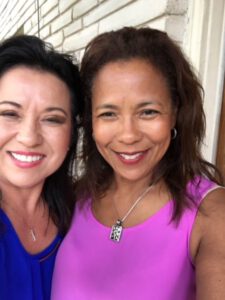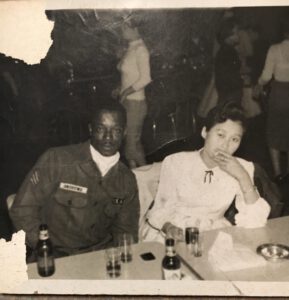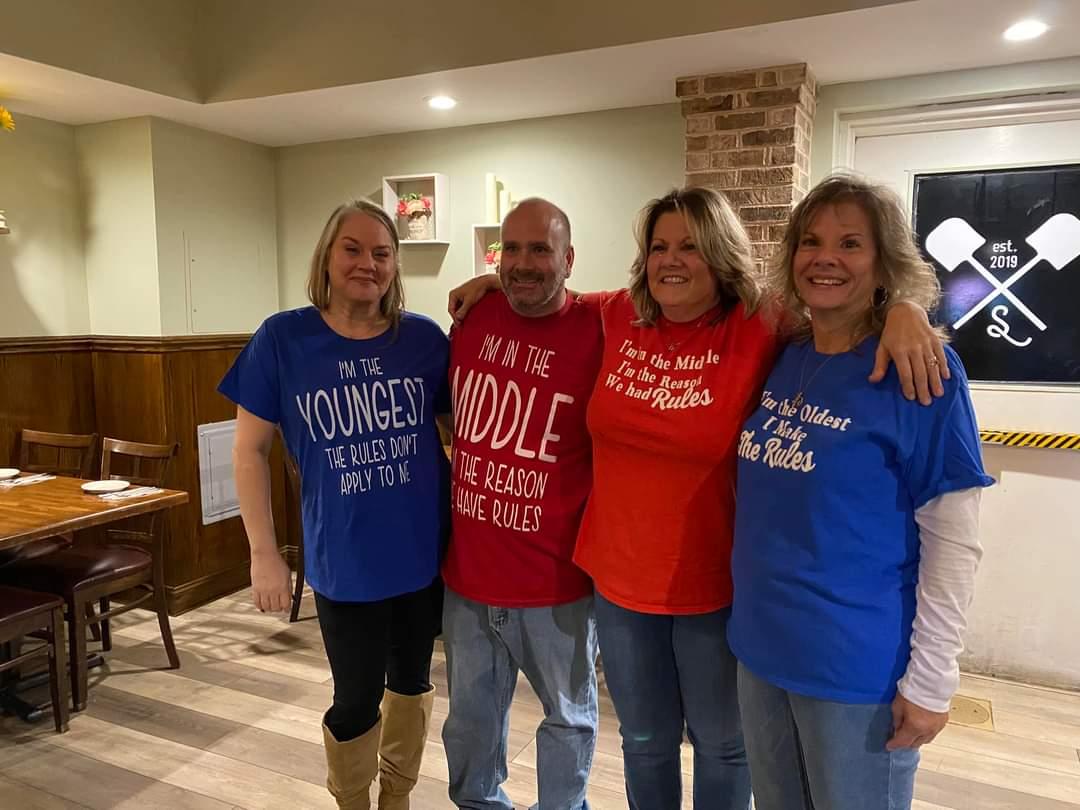When they met for the first time, Tamara Miller and Leslie Wheeler were struck by their similarities. They both are Korean adoptees, and both share a cheerful disposition and closets full of colorful hats and clothes. They even carried nearly identical purses at that first meeting.

Leslie, left, and Tamara.
Though they were strangers, the two share the same birth mother. And beyond all the uncanny things they had in common, the sisters noticed a deeper connection right off: an immediate sense of sisterhood and love.
“You wouldn’t know that siblings could be so similar just through blood,” said Tamara.
She was stunned by all she had in common with her newfound sister, and yet “we couldn’t have been raised more differently or led more different lives,” she said.
Soldier Fathers
The sisters never met as children, and now, with children of their own, they’re making up for lost time and filling in the blanks in their family story. Their story is reminiscent of 23andMe stories from other Korean adoptees.

Tamara’s birth father, Harry Andrews, with her and Leslie’s birth mother.
Both of their fathers had served in the Army in Korea.
Leslie was living with her grandmother when Tamara was born. Leslie’s father was white, while Tamara’s father was an African American GI. The family was poor and already struggling to make ends meet. Tamara was placed in an orphanage and adopted as an infant. Leslie’s adoption happened much later.
“I had a hard life in Korea,” she said. “The country was poor and we were starving. It was a miracle if we ate two meals a day. Going to school was really hard. I just didn’t fit in with the Korean kids because I was so different looking. I was a little girl living in a country that wasn’t accepting of half-American kids.”
Leslie had lived with their mother and her American soldier father until the age of 2. When he returned to America, saying he’d come back for them. Then she lived with her mother and relatives until her mother passed away. Leslie was adopted by an American family at the age of 13.
A Short History of Adoptions from Korea
The sisters’ story is part of a wave of orphaned and mixed-race Korean children adopted after the Korean War by American families. Now well into adulthood, many of these adoptees have turned to DNA testing. They hope to learn more about their cultural roots, and in some cases connect with biological family.

Tamara as an infant in Korea.
International adoptions didn’t really begin in the US until the Displaced Persons Act of 1948, which allowed orphans from WWII admission to the US for permanent residence. But it wasn’t until 1955, and the Bill for Relief of Certain War Orphans, that large scale international adoptions — initially from Korea — to the US were possible. Today China is the main hub of international adoption. But for at least 40 years most international adoptions originated in Korea, with at least 200,000 children adopted worldwide. That only lessened in the late 1980s after Korea began limiting the number of children who could be adopted out of the country.
Holt International
Early on in the United States, it was standard practice for many families to Americanize their adopted child as quickly as possible. That often meant cutting them off from their cultural roots. Thus many generations of adoptees were estranged from their cultural heritage and had very little if any information about their birth families.

A photo of Leslie before her adoption.
With the hindsight of more than half a century of adoptions from Korea, the groups that handled many of these adoptions now see the importance of these cultural and family connections, said Susan Soonkeum Cox, Vice President of Policy & External Affairs at Holt International Children’s Services, an adoption agency that helps American families adopt children from outside the United States, including Korea. The couple who originally started Holt, Harry and Bertha Holt, were also instrumental in passing the Bill for Relief of Certain War Orphans.
“We (now) have the benefit of several generations of adoptees,” said Soonkeum Cox, a Korean adoptee herself. “We’ve come to be aware that a child’s history, where they’re from and their beginning. (It) is very much a part of who they are as they go throughout their lifetime.”
Reconnecting with Korean Ancestry
That desire to connect has expanded the services Holt now offers. The agency assists with family reunification, “motherland tours” of Korea, and Korean culture education. In particular, Holt offers “heritage camps,” where adoptees can learn more about the Korean language, dance and cuisine and discuss issues of identity. Other organizations like Me and Korea also provide adoptees with opportunities to learn more about Korean culture, connect with fellow adoptees and travel to Korea as well. In addition, Holt and some other agencies assist adoptees over the age of 18 with finding more paper records and other information about their birth and adoptions, sometimes even connecting them with biological family.
But frequently because of the nature of some of these early adoptions or the lack of a clear paper record, DNA is the only option for learning more. As companies like 23andMe have grown, so too have the chances of adoptees finding relatives. The nonprofit 325 Kamra even distributes DNA kits to Koreans and Korean adoptees worldwide, to try to help Korean adoptees find family. And then there are Facebook groups like the KAD 23andme Results Group, where Korean adoptees can share their results, questions, and concerns.
Other Korean Adoptee Stories
Embracing testing has resulted in a wave of stories like Tamara’s and Leslie’s.

Justin and Renee.
Most recently a pair of sisters adopted from Korea found each other through 23andMe, and learned they grew up just 30 minutes from each other in Michigan. 23andMe also helped reunite identical twins Amanda and Katey. Born in Seoul, and adopted by different American families, the sisters, both in their 30s, connected for the first time after using 23andMe.
Another pair of sibling adoptees from Korea, Justin and Renee, were also well into adulthood before finding each other. Justin had been abandoned on the steps of a theater in Seoul, when he was a toddler. The next day, his sister Renee, who was 5 at the time, was left at a market. They reunited 30 years later on Justin’s 36th birthday. And testing has helped others simply clear up mysteries. For example, another pair of sisters adopted together from Korea, grew up not knowing for sure that they were related. 23andMe confirmed that they indeed were biological sisters.
Tamara and Leslie
Although they all share a connection to Korea, each story is unique.
For Leslie and Tamara, the story isn’t just about sisters connecting, but also about coming to terms with their mixed ancestry, and filling in the gaps of their family history. They were able to find each other because Leslie’s son, Noelin Wheeler, had tested and matched with Tamara on 23andMe. Leslie didn’t even know she had a sister until Noelin, a tattoo artist known for his appearance on SpikeTV’s show Ink Master, found Tamara.

Leslie and her son Noelin.
When Noelin texted his mom Tamara’s photo, she immediately knew they were related.
“I looked at Tamara and felt like I was staring at my mother,” Leslie said.
The two have been able to meet each others’ families and spend time with each other. They’ve become a part of each other’s lives, seeing each other a couple times a year and talking weekly.
“Leslie has given me a sense of identity,” said Tamara. “As an orphan you don’t always know why you are the way you are, why you think or react the way you do. Now I understand myself better.”
These last three years, in particular, have been especially life changing for Tamara. Not only did she find Leslie, last year she found five paternal siblings, all of whom ended up living close to her. She enjoys spending time with them regularly, as well.
“Generations of people have been brought together as a result of these DNA tests, and all of our lives have been enriched,” said Tamara.




